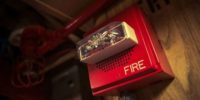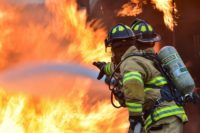Fire Testing Market Forecast to Be Valued at $13B by 2032

Image by Renee Gaudet from Pixabay
The fire testing market is projected to reach an estimated value of $13 billion by 2032 from $7.1 billion in 2022, rising steadily at a compound annual growth rate (CAGR) of 5.9 percent during the forecast period.
The fire testing market is driven by a number of factors, including compliance, automation, technological advancements like advanced monitoring systems and more precise stimulation tools, and certification services.
Manufacturers and end users of valves are growing more interested in fire-safe testing, which is encouraging the adoption of fire testing systems, according to a report by Fact.MR. This is mostly due to an increasing focus on safety and environmental concerns.
Among the report’s key takeaways:
- With a CAGR of 5.7 percent and a market value of $4.5 billion in 2021, the United States dominated the market. The rapid growth of commercial and industrial building in the U.S. and Canada has boosted fire testing market share significantly.
- In the global fire testing industry, Asia Pacific has the highest growth potential, with a CAGR of 6.2 percent. The growth of the fire testing market is being driven by rapid industrialization and urbanization in developing nations such as China and India.
- Construction and infrastructure are predicted to hold the largest share of the global fire testing market over the forecast period, with a CAGR of 5.8 percent.
According to the report, the demand for fire testing systems is influenced by increasingly stringent safety and environmental standards. As the number of deaths and property losses has increased, public awareness of fire safety measures has moved the fire testing market share forward.
Two major factors driving the rise of the fire testing market share are the adoption of safety measures in sectors and the expansion of automation in buildings around the world. The COVID-19 pandemic had a negative impact on the fire testing market size in the first quarters of 2020. As a result, new fire testing equipment is being installed in fewer industrial and commercial applications.
However, greater spending on new construction activities and the replacement of old fire alarms, sprinklers and detectors are likely to fuel the overall demand for fire testing systems in the coming years. Furthermore, high installation and maintenance costs are expected to limit the growth of the fire testing market share.
Looking for a reprint of this article?
From high-res PDFs to custom plaques, order your copy today!








